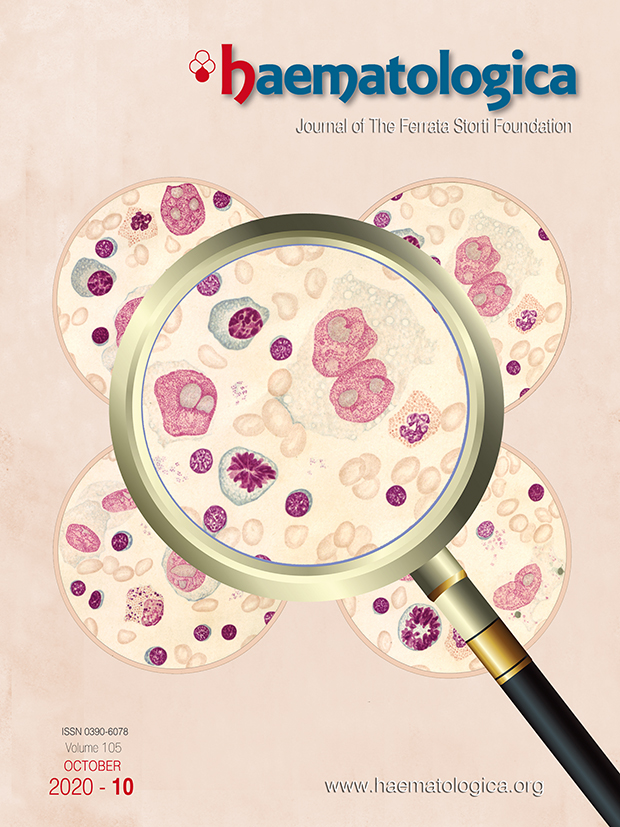The color drawings reproduced on the cover of this issue of Haematologica have been taken from a 1932 article published by Paolo Introzzi, at that time a young assistant of Adolfo Ferrata at the Department of Internal Medicine of the University of Pavia and subsequently Editor in Chief of Haematologica from 1960 to 1973.1 In this paper, Introzzi describes four patients with splenomegaly and without superficial adenomegalies in whom the diagnosis of Hodgkin disease had been made through the cytological study of spleen aspirates. The procedure was without side effects. A few weeks later there was involvement of superficial lymph nodes and the diagnosis of Hodgkin disease was confirmed by their histological examination.
At that time, spleen puncture was considered a bold procedure to carry out. However, Introzzi concluded that it does not present undue risk to the patient in the face of its high diagnostic value. This idea has been recently confirmed by the analysis of large case series of patients undergoing ultrasoundguided fine needle aspiration of the spleen. The conclusion was that the procedure is safe and effective in the diagnosis of lymphoproliferative diseases.2 In addition to reporting the pioneering use of the procedure, the article is notable for the beautiful designs that describe the cytological morphology of Hodgkin and Reed-Sternberg cells in their finest detail.
Figures 1 and 2.Hodgkin and Reed-Sternberg cells. These beautiful hand-drawn color plates illustrate an article published in Haematologica in 1932 entitled “La puntura della milza nel granuloma maligno” (Spleen puncture in malignant granuloma).
Footnotes
Correspondence
References
- Introzzi P. [La puntura della milza]. Haematologica. 1932; 13:571-586. Google Scholar
- Gochhait D, Dey P, Rajwanshi A. Role of fine needle aspiration cytology of spleen. APMIS. 2015; 123(3):190-193. https://doi.org/10.1111/apm.12339PubMedGoogle Scholar
Data Supplements
Figures & Tables
Article Information

This work is licensed under a Creative Commons Attribution-NonCommercial 4.0 International License.

